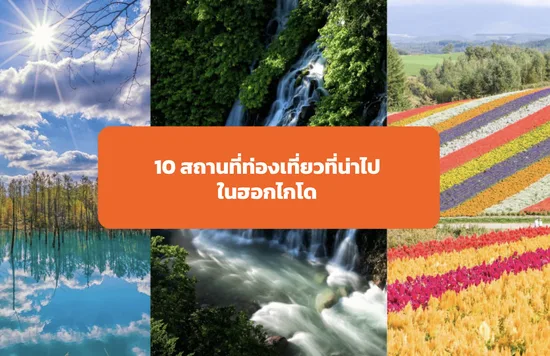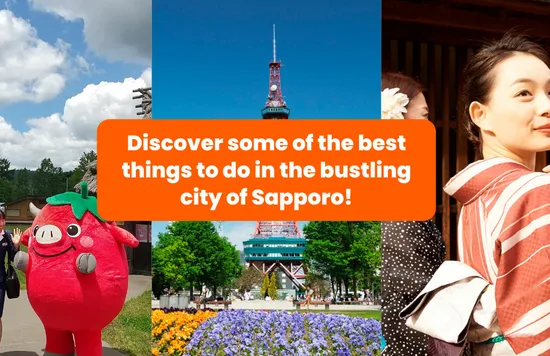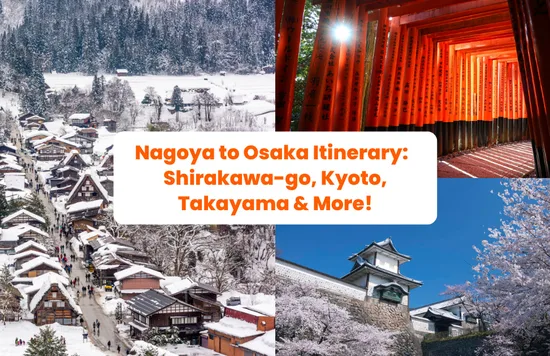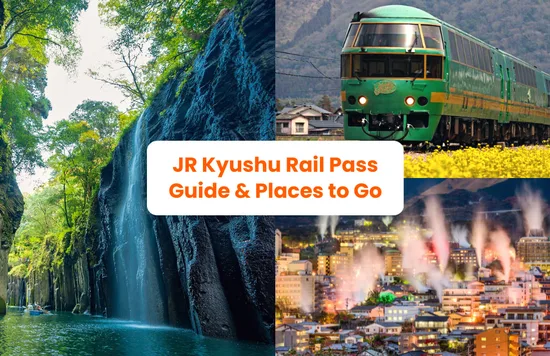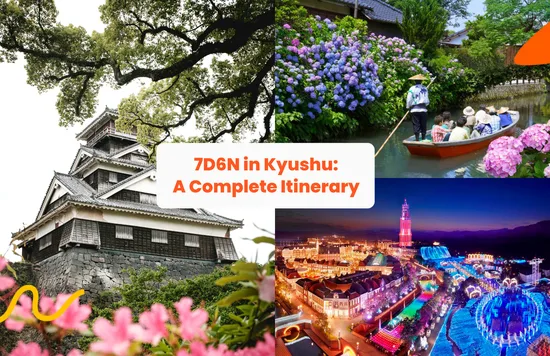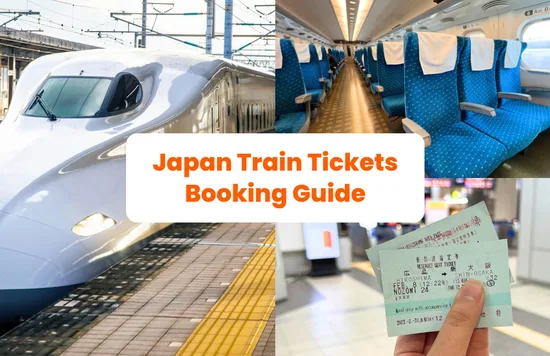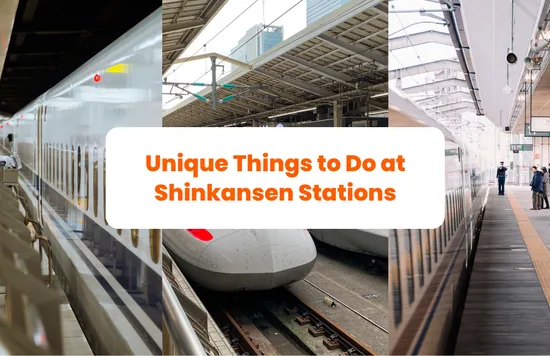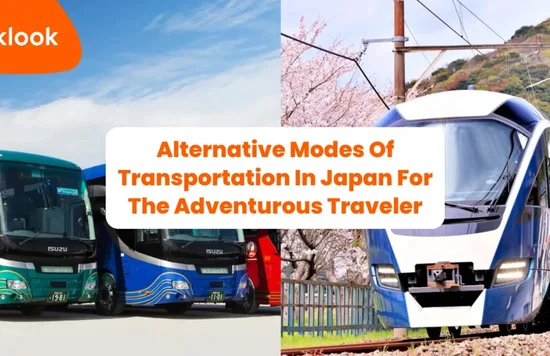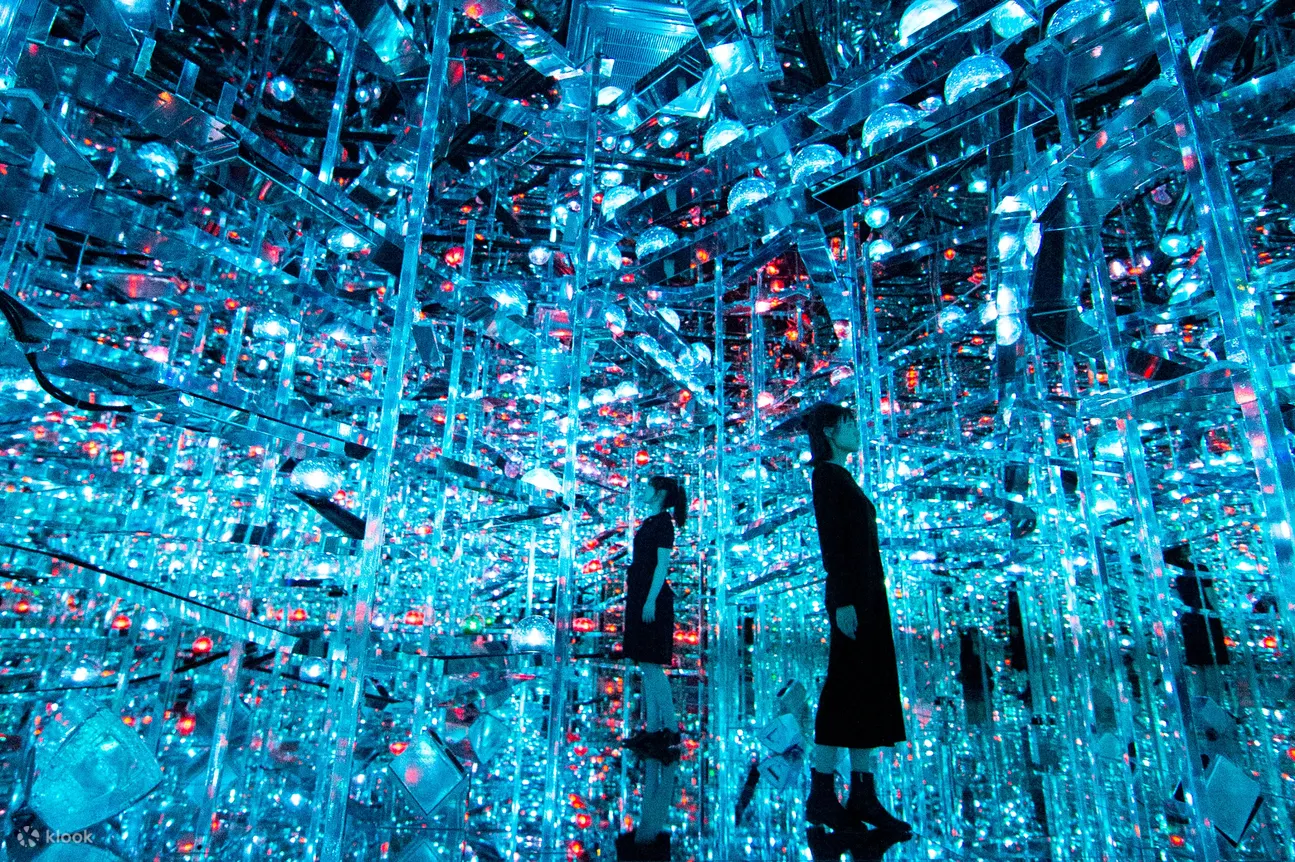Trains in Japan and How to Travel Japan’s Rail Network
Brimming with amazing eats, iconic landmarks, sensational views and (so much) more, a trip to
Japan promises a life-changing experience and an abundance of adventures. If it’s your first time in Japan, you might be a little worried about how to travel around Japan (especially if you don’t speak Japanese). Fret not, we are here with a first-timer’s guide on how to get around Japan by train!
Before we begin, here’s a quick
#KlookTip - Download the app
Japan Travel by Navitime! If you plan to travel a lot via trains and buses, this app will give you the best route recommendations. You can also select which JR Pass you have for it to show you options that are covered by your pass. [
Apple Store |
Google Play]
How to Use Trains in Japan
Japan is renowned for its extremely efficient train network, and with multiple lines connecting various cities and neighborhoods together, it can understandably get quite confusing. Let us untangle that a bit for you!
Firstly, it’s important to note that the railway lines in Japan are not operated by a single company. To put it simply, JR aka Japan Railways Group is the main railway network in Japan — it owns about 80% of the country’s railroads (where your JR Pass comes in). The remaining 20% is served by dozens of other private railway companies, especially in and around metropolitan areas.
Types of Trains in Japan
Next, there are different types of trains in Japan. Different trains suit different needs — for example the bullet train is the fastest transportation between cities and stops at major city stations (eg. Tokyo Station to Shin Osaka Station). If you’re planning to explore a certain area in a particular city instead, you can hop onboard a local train which stops at every station.
Here’s a quick summary of the various types of trains in Japan:
Type of train: | What is it? |
Shinkansen (新幹線) | - Also known as bullet trains, these are the fastest transportation modes in Japan with very few stops (if any) in comparison to the rapid or local trains - Included in Whole Japan JR Pass except Nozomi and Mizuho lines |
Limited Express (特急) | - There are over a 100 different types of Limited Express trains, with a limited number of stops, so they only go to major Japanese stations - Included in JR Pass |
Express (急行) | - Also stops at limited stations - Covers main airport transfers like Haneda International Airport (Tokyo Monorail), Narita International Airport (Narita Express), and Kansai International Airport (Haruka Express) - Included in JR Pass |
Rapid (快速) | - Also stops at limited stations - No special fare needed, you can board them with a regular train ticket - Included in JR Pass |
Local (普通列車) | - Local trains can either go from point A to point B or run at loop lines in both directions (like the Yamanote line in Tokyo or the Osaka loop line) - Stops at all stations hence not recommended for long distance travelling as it can be very slow - Included in JR Pass |
Special | - Also known as joyful trains, these special themed trains are usually character trains or trains that have unique features or designs - Eg. Pikachu Train (POKÉMON with YOU Train), FruiTea Fukushima (café train with desserts and beverages made from seasonal fruits from Fukushima). More info here. |
Japan Train Ticket Types
Since there are various trains in Japan, you would need to buy different train tickets depending on what kind of train you are looking to take.
Here’s a quick overview on what’s available:
Train Ticket Type | Description |
JR Pass | - Allows unlimited travel on all Japan Railways Group (JR) trains, buses, and ferry services - Choose from Whole Japan Pass or other Regional Passes - Duration varies depending on what pass you get |
Standard Train Ticket | - Normal train ticket that will take you from Point A to Point B - Buy from vending machine at train station |
IC Card | - Prepaid rechargeable transportation cards (think EZ-Link), which can be used to pay your train or bus fare - Pasmo and Suica are the most popular transportation cards in Tokyo, while the ICOCA is more commonly used in Osaka. - Can also be used as contactless payment at some shops and restaurants in Japan |
City Pass | - Also known as Day Pass - Offers one or multiple day-access to unlimited use of any of the city transportation means such as trains, trams, buses, and metro - Buy at ticket counter or vending machines in any of Japan’s big cities: Tokyo, Osaka, Kyoto, Sapporo, Nagoya, Hiroshima and more |
Introduction to Traveling on Japan Railways (JR)
Firstly, you would’ve probably heard the benefits of getting a
JR Pass for your Japan travels - but what is a JR pass and how does it help exactly?
✔️ Allows tourists unlimited travel on all Japan Railways Group (JR) Shinkansen, trains, buses, and ferry services across the country
✔️ Is available in 7, 14, or 21-day validity depending on the duration of your trip
✔️ Price starts from USD 206.95 for 7-day pass
✔️ Is best if you plan to explore many different cities in Japan
✔️ Unlimited travel on all Japan Railways Group (JR) transportation — different passes cover different types of transport (trains, buses, ferry etc.) in a specific area or region; Check what’s included in your pass before you purchase!
✔️ Depending on the pass, different durations and flexible days are available
✔️ Price depends on location selected
✔️ Is best if you only have plans to explore a specific area or specific cities as you can save more money on a regional pass rather than a Whole Japan pass
For more details on what a JR Pass covers, how much, and which pass you should get, check out this guide:
Beyond JR: Privately-Owned Rail Companies
As mentioned earlier, there are other privately-owned rail companies in Japan. Private railways often handle intercity travel, airport connections, and particular regional destinations not covered by the Japan Rail Pass. These companies often also operate local bus networks, hotels, and attractions.
If you intend to explore a certain area in Japan instead of traveling from city to city, most transportation companies also offer special city passes that are great for your adventures! We’ll share more about the popular ones for tourists (according to the city) in greater detail below!
You can discover, book, and experience the best things to do including attractions, activities, car rentals, SIM cards, and more on Klook. Sign up now! 🧡
Enjoy 10% off your first app booking when you use the promo code
<KEEPLOOKING10>. T&Cs apply.
Getting Around Tokyo
Home to big city skylines, mammoth shopping streets, tasty eats, and iconic attractions like
Tokyo Disneyland,
SHIBUYA SKY, and more,
Tokyo is a must-visit destination for every first-timer to Japan.
Covering the whole city with almost 300 stations, Tokyo subway lines will help you get to almost any destination quickly and easily. For Tokyo, the major lines are:
From the Airport
Narita Airport
🚝
Keisei Main Line or JR Narita Express
Keisei Main Line
Narita International Airport is the main airport for Tokyo. Here you can take the Keisei Skyliner on the Keisei Main Linethat will get you to Tokyo’s Keisei-Ueno station. Take a short 3-min walk and you will get to Ueno Station where you can start using your JR Pass.
JR Narita Express
The Narita Express "N'EX" is a limited express train that directly connects Narita International Airport with major cities and districts including Tokyo, Shinagawa, Shibuya, Shinjuku, and Yokohama. This option is covered by JR Pass.
Haneda Airport
🚝 Keikyu Kuko line (Keikyu Airport Line) or Tokyo Monorail
Keikyu Airport Line
Keikyu Airport Line is a private railway line that connects Haneda Airport to Keikyu Main Line, so you can get to Tokyo, Kawasaki, and Yokohama.
Tokyo Monorail
The other rail option from Haneda Airport Tokyo International Airport is the Tokyo Monorail which is included in the JR Pass. You can take the monorail to Hamamatsucho Station in downtown Tokyo.
Central Tokyo
🚝 JR, Tokyo Metro, Toei, & Others
Taking JR in Tokyo
Tokyo's most prominent train line is the
JR Yamanote Line. The major stations are Tokyo, Ueno,
Ikebukuro, Shinjuku, Shibuya, and Shinagawa.
The Tokaido Shinkansen (bullet train) stops at Tokyo and Shinagawa.
JR Regional Passes that include Tokyo
JR Regional Pass | Description | Validity / Redemption | Price |
Tokyo Wide Pass | - Unlimited travel on Shinkansen and limited express trains within the valid area - Covers both Narita and Haneda Airports, Tokyo and the surrounding Kanto area - Easy to visit popular tourist locations such as Mt. Fuji, Izu, Nikko, Karuizawa, or GALA Yuzawa ski resort - Not inclusive of Tokaido Shinkansen and subway travel in Tokyo or Yokohama or any buses or ferries | - 3 days - Redeem by scanning the QR and your passport at JR Ueno station (WAmazing vending machine inside JR EAST Travel Service Center) | ~$101 |
Tohoku Area Pass | - Unlimited travel on JR East lines, including local, limited express, and express trains, Shinkansen, Tokyo Monorail, etc - Covers the region of Tohoku, northern Honshu, and Tokyo - Good to explore areas such as Nikko, Izu, Fukushima, Aomori, and Sendai - Not inclusive of Tokaido Shinkansen and some highway and route buses | - 5 days - Redeem with the electronic exchange voucher at the JR East major stations | ~$199 |
Nagano/Niigata Area Pass | - Unlimited travel on selected Shinkansen, Narita Express, and Tokyo Monorail trains, and more - Covers both Narita and Haneda Airports, scenic countryside of Nagano and Niigata - Good to explore areas such as Nikko, Izu, Nagano, and Niigata - Not inclusive of Tokaido Shinkansen and some highway and route buses | - 5 days - Redeem with the electronic exchange voucher at the JR East major stations | ~$180 |
Hokuriku Arch Pass | - Unlimited rides on Hokuriku Shinkansen, Express Trains, Rapid Services, and local trains - Covers JR trains to Tokyo's Narita and Haneda Airport and Osaka's Kansai Airport - Covers major cities like Tokyo, Hokuriku, and Osaka - Not inclusive of Tokaido Shinkansen, does not cover buses (even if they are JR buses), Tateyama Kurobe Alpine Route | - 7 days - Receive your Exchange Order voucher and simply exchange it for your Rail Pass in Japan | ~$244 |
Tokyo's subway network is operated by two entities: Toei with four lines, and Tokyo Metro with nine lines. Together, they densely cover central Tokyo and provides more flexibility to explore Tokyo than the JR line.
If you are spending the day exploring within Tokyo, we recommend getting a
Tokyo Subway Pass. You can choose from 24/48/72-hour validity passes. This grants unlimited access to everything in the map above as it is covered by Tokyo Metro and Toei.
Exploring Greater Tokyo
Runs 3 three lines from central Tokyo to the west and Kanagawa Prefecture
Offers the Odakyu Limited Express Romancecar which only has reserved seats
Use to travel to Hakone Area, Mount Fuji, and Lake Kawaguchi Area and more!
Originates at Ikebukuro Station, and extends to northwest suburbs as far as Tokorozawa, Saitama
The Seibu Lines connect directly to the sacred and traditional places of Kawagoe and Chichibu, where you can enjoy the charm of the Edo period to the fullest
Check out more about the Nikko Pass here:
Some Tokyo inspiration if you are looking for more cool things to put into your itinerary:
Getting Around Osaka
For those looking for some of the best food and fun in Japan,
Osaka definitely has it all. Spend your days screaming your lungs out at
Universal Studios Japan (the Wizarding World of Harry Potter and newest Super Nintendo World are must-visits!), eating your way through Dotonbori, and marveling at wonders like the
Osaka Castle and more!
Osaka has two major city centers and four major train stations. The two city centers are nicknamed Kita ("North") around Osaka/Umeda Station and Minami ("South") around Namba Station. For Osaka, the major lines are:
JR
Osaka Metro
Other lines serving Greater Osaka (Nankai Railway, Hankyu Railway, Kintetsu Railway, Hanshin Railway, Keihan Railway)
From Kansai International Airport
🚝 JR Haruka Express, Nankai Line Airport Express
JR Haruka Express
For the
Haruka Express, it connects the Kansai Airport with stations in the major cities in Kansai, such as Osaka, Kyoto, Nara, and Kobe. It is covered in your JR Pass. From Kansai Airport Station, it takes about 35 minutes to Tennoji, 50 minutes to Shin-Osaka, and 80 minutes to Kyoto.
If you wish, you can also get a
one-way ticket from the airport to your station of choice like Shin-Osaka station, Kyoto station, Tennoji Station, Nara Station, or Kobe Station.
Nankai Airport Line
The Nankai Airport Line is operated by the Nankai Electric Railway and connects Kansai Airport to the railway network in Osaka. It is a 34-minute journey going to Namba Station inside a retro-themed train.
Traveling from Tokyo to Osaka
🚝 JR
Tokyo (Tokyo and Shinagawa stations) and Osaka (Shin-Osaka Station) are connected with each other by the JR Tokaido Shinkansen. Note that the Shinkansen trains stop not at Osaka Station, but at Shin-Osaka Station.
Nozomi trains require about 2.5 hours to reach Shin-Osaka Station from Tokyo, Hikari trains about 3 hours, and Kodama trains about 4 hours. Do note that your JR Pass does not cover Nozomi and Mizuho trains.
If you intend to only explore Osaka alone and just need to take a single Shinkansen ride from Tokyo to Osaka, you can also get a
one-way Shinkansen ticket.
#KlookTip: Want to get a glimpse of the magnificent Mt.Fuji on your ride from Tokyo to Osaka or vice versa? Make sure to book the D or E seats on your ride. You will see Mt Fuji at Shin-Fuji Station!
Central Osaka
🚝 JR, Osaka Metro
Taking JR in Osaka
Many JR lines run through the Kansai area. When going sightseeing through the Osaka area, you’ll mainly be using the JR Kyoto Line, the JR Tokaido-Sanyo Line, the JR Osaka Loop Line, and the line with the closest station to Universal Studios Japan, the Yumesaki Line. A JR Pass may be used on each of these lines.
JR Osaka Loop Line: Perfect for sightseeing around Osaka
Operates in a circle around the centre of Osaka
There are many sights along its tracks, such as Osaka Castle and Tsutenkaku
JR Regional Passes that include Osaka
JR Regional Pass | Description | Validity / Redemption | Price |
Hokuriku Arch Pass | - Unlimited rides on Hokuriku Shinkansen, Express Trains, Rapid Services, and local trains - Covers JR trains to Tokyo's Narita and Haneda Airport and Osaka's Kansai Airport - Covers major cities like Tokyo, Hokuriku, and Osaka - Not inclusive of Tokaido Shinkansen, does not cover buses (even if they are JR buses), Tateyama Kurobe Alpine Route | - 7 days - Receive your Exchange Order voucher and simply exchange it for your Rail Pass in Japan | ~$244 |
West Kansai Pass | - Unlimited rides on JR trains and buses, including airport express HARUKA - Covers Osaka, Kyoto, Kobe, Himeji, Nara | - 1,2,3 or 4 days - Redeem your JR Pass via digital redemption machines at JR Pass ticket offices | From ~$24 |
Kansai WIDE Area Pass | - Unlimited travel on designated Kansai train and bus lines (including shinkansen and limited express trains) - Covers Osaka, Kyoto, Kobe, Himeji, Nara, Okayama, Tottori and more - Not inclusive of Tokaido Shinkansen | - 5 days - Redeem your JR Pass via digital redemption machines at JR Pass ticket offices | ~$100 |
Kansai Hiroshima Area Pass | - Unlimited travel on Sanyo Shinkansen, Express Trains, JR West Ferry, and more - Covers Kyoto, Tottori, Himeji, Okayama and Hiroshima - Not inclusive of Tokaido Shinkansen | - 5 days - Redeem your JR Pass via digital redemption machines at JR Pass ticket offices | ~$149 |
Osaka Metro
Subways are often the most convenient means of getting around central Osaka. The city has eight subway lines that connect Osaka's two main districts, Kita and Minami. The more popular lines among travelers are the Chuo Line (green) and Midosuji Line (red).
If you are exploring Osaka city we recommend snagging a
Osaka Metro Pass. Similar to the Tokyo metro Pass, the Osaka Metro Pass grants you unlimited train travel in the designated Osaka Metro and Osaka City Bus routes. You can also get discounts on tickets to about 30 attractions in Osaka! The Osaka Metro Pass comes in 1 or 2-day validity options.
More detailed guide to the Osaka Metro Pass:
#KlookTip: If you’re looking to do plenty of sightseeing in Osaka, the
Osaka Amazing Pass is perfect for you! It allows unlimited travel on the Osaka Metro subway and Osaka City buses and offers free admission to more than 50 attractions. It is available as a one or two-day pass.
Exploring Greater Osaka
JR Kyoto Line
#KlookTip: If you are traveling out to Kyoto and have a Whole Japan JR Pass, you can take the Tokaido Shinkansen from Shin-Osaka Station to Kyoto Station and reach in 15 minutes. However if you do not have a Whole Japan JR Pass, the Kyoto Line rapid train above is the next fastest way of traveling from Osaka to Kyoto.
JR Tokaido-Sanyo Line
Also called the Kobe Line
Connects Shin-Osaka Station (on the Shinkansen) with Osaka Station
Also runs from Osaka Station to Kobe Station and over to Himeji Station
The trip between Osaka and Kobe takes about 25 minutes on the special rapid service train
More information about the Hankyu Tourist Pass:
More information about the Kyoto Osaka Sightseeing Pass:
Kintetsu Railway manages the largest non-JR rail network, connecting Osaka, Kyoto, Nara, Ise, and Nagoya
More information about the Kintetsu Rail Pass:
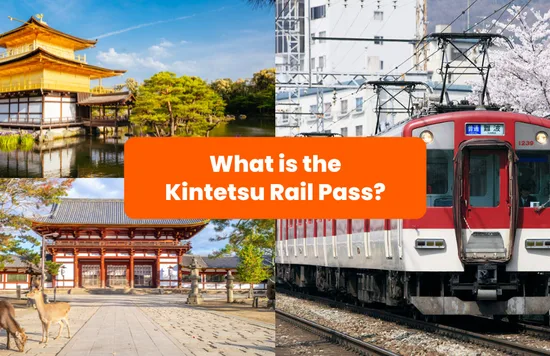
Things To Do
Transportation
Klook’s Kintetsu Rail Pass: See the best of Osaka, Kyoto, Nara, Nagoya, and Mie (Ise-Shima)
Planning a trip to Japan’s Kansai region? With Klook’s Kintetsu Rail Pass, you can seamlessly explore iconic destinations like Osaka, Kyoto, Nara, Nagoya, and the stunning Ise-Shima area. Enjoy unlimited train rides, visit must-see attractions, and make the most of your journey with the convenience and flexibility of this all-in-one travel pass. Whether you're marveling at Kyoto's temples, savoring Osaka's street food, or discovering the serene beauty of Ise-Shima, this pass has you covered.
Nankai Electric Railway runs lines in southern Osaka and Wakayama Prefecture, facilitates access to Kansai Airport
You can travel to Namba Station or Kansai International Airport with the cute retro-themed train Nankai Line Airport Express
The Nankai All Line 2 day pass allows unlimited access to any
Nankai Line (except Semboku Line) for two days
Explore Greater Osaka with Kansai Thru Pass
There sure are so many private rail companies offering various passes on their lines. If you can’t decide on sticking to one, you might want to consider the Kansai Thru Pass - a rail pass, which provides unlimited use of trains, subways and buses in the Kansai Region (around Osaka and Kyoto). This is, of course, not inclusive of JR lines.
More about Kansai Thru Pass, how to go, and where to use it:
More information on all the travel passes for Osaka & Surrounds:
Some Osaka inspiration if you are looking for more cool things to put into your itinerary:
Getting Around Hokkaido
Japan’s northernmost island boasts vibrant nature escapades galore, from sprawling rainbow flower fields in spring to powder-soft snowy slopes for skiing and snowboarding in winter. Don’t forget the magical
Shirogane Blue Pond and Shirahige Waterfall too! Nature lover or not, a trip to
Hokkaido will definitely reinvigorate and refresh your mind, body, and soul.
From New Chitose Airport
🚝 JR
New Chitose Airport and Sapporo Station are connected by JR rapid trains that will get you to Sapporo in 35 minutes. The trains are covered by the Japan Rail Pass and Hokkaido Rail Pass.
Traveling from Tokyo to Hokkaido
🚝 JR
If you are not flying to Hokkaido directly, you can actually take the Shinkansen (covered by JR Pass). From Tokyo you can take the Shinkansen to Hokkaido (Tokyo Station to Shin-Hakodate-Hokuto Station). The journey will take about four hours. You can then take the Hakodate Liner, which connects Shin-Hakodate-Hokuto Station to Hakodate Station in just 15 minutes.
To get to Sapporo, transfer from Shin-Hakodate-Hokuto station to the Hokuto limited express to Sapporo. The journey will take another 3.5 hours.
Sapporo
🚝 Mostly JR
Hokkaido’s capital city Sapporo boasts three subway lines, a tram line and many bus services (run by JR Hokkaido Bus, Hokkaido Chuo Bus, and Jotetsu Bus). The Whole Japan Rail Pass,
Hokkaido Rail Pass and Hokkaido Free Pass are valid on local buses operated by JR Hokkaido Bus.
If you’re only traveling around the Hokkaido area, The Hokkaido Rail Pass might come in handy for your adventures. It allows you to explore Hokkaido's major cities with unlimited rides aboard local trains, buses, or the JR Hokkaido Limited Express/Express line and covers Hakodate, Niseko, Furano Otaru and more! It is available in 5 or 7-day validity.
More details on JR Hokkaido Pass:
If you’re planning to only visit Sapporo and its surroundings, there’s also the
Sapporo-Furano Area Pass, which allows unlimited travel on JR trains in the area around Sapporo, Asahikawa, and Furano (areas on map above) for four consecutive days.
Other JR Regional Passes for Hokkaido
JR Regional Pass | Description | Validity / Redemption | Price |
East-South Hokkaido Rail Pass | - Unlimited use of trains operated by JR East in the Kanto and Tohoku regions and JR Hokkaido trains in southern Hokkaido - Covers Haneda, Narita and New Chitose airport, and connects Tokyo to Sapporo - Not inclusive of Tokaido Shinkansen | - 6 days - Receive your Exchange Order voucher and simply exchange it for your Rail Pass in Japan | ~$269 |
Tohoku-South Hokkaido Rail Pass | - Unlimited travel on JR trains (including shinkansen and limited express trains) in the Tohoku region and southern Hokkaido and BRT buses along the Sanriku Coast -Also covers some non-JR train lines (all trains along the Iwate Ginga Railway and Aoimori Railway and all trains between Sendai and Sendai Airport) - Covers Sapporo, Hakodate, Aomori, Akita, Sendai, Fukushima and more | - 6 days - Receive your Exchange Order voucher and simply exchange it for your Rail Pass in Japan | From ~$240 |
Some Hokkaido inspiration if you are looking for more cool things to put into your itinerary:
Getting Around Nagoya
While not as popular as Tokyo, Osaka, and Hokkaido for first-timers,
Nagoya has its own charming sights and sounds, and is the perfect launching pad for travelers looking to explore the central region of Japan — Nagano, Niigata, Gifu, Toyama, Aichi, Shizuoka, Yamanishi, Fukui, and Ishikawa Prefectures.
From Chubu Centrair International Airport
🚝 Meitetsu Railway
Meitetsu Railway Company connects Chubu Centrair International Airport to Meitetsu Nagoya Station. The Sky Limited Express takes 28 minutes.
Traveling from Tokyo to Nagoya
🚝 JR
You can get to Nagoya from Tokyo via the JR Tokaido Shinkansen. Hikari trains take slightly less than two hours and Kodama trains take about three hours. Remember, your JR Pass is not valid for the Nozomi!
Central Nagoya
🚝 JR, Meitetsu Railway, Kintetsu Railway, Linimo Railway, the Aonami Line, and Nagoya subway lines
Taking JR in Nagoya
Nagoya Station connects several major train lines on which you can use your Japan Rail Pass:
Tokaido Shinkansen Line (to Tokyo or Osaka/Kyoto)
Tokaido Main Line (to Tokyo or Kobe)
Chuo Main Line (to Tokyo)
Takayama Line (to Takayama and Toyama)
Kansai Line (to Kameyama, including connections to Osaka)
Other JR Regional Passes for Nagoya
JR Regional Pass | Description | Validity / Redemption | Price |
Osaka - Nagoya Ise-Kumano-Wakayama Area Pass | - Unlimited rides on JR conventional lines running between Kansai Airport, Osaka City Area, Iseshi, Kumano, Nara, Nagoya - Covers Osaka, Nagoya,Ise, Kumano, and Wakayama | - 5 days - Receive your Exchange Order voucher and simply exchange it for your Rail Pass in Japan | ~$112 |
Takayama-Hokuriku Area Tourist Pass | - Unlimited rides in Kanazawa, Takayama, Toyama, Nagoya, Osaka, and includes buses and Hokuriku Shinkansen - Covers Kanazawa, Takayama, Toyama, Nagoya, Osaka and Shirakawa-go | - 5 days - Receive your Exchange Order voucher and simply exchange it for your Rail Pass in Japan | ~$142 |
Nagoya Subway
The Nagoya Subway has six lines. At the main Nagoya Subway Station, you can access two subway lines: the Higashiyama Line and Sakura-dori Line.
The Higashiyama Line (yellow) is the busiest, and connects you to Sakae District. Sakae is a major commercial district in central Nagoya and has many popular shopping malls.
Exploring Greater Nagoya
Meitetsu
Meitetsu is a private railway company which operates an extensive railway network in both Aichi and Gifu Prefectures
Meitetsu also connects Meitetsu Nagoya Station and Chubu Centrair International Airport
Kintetsu Railway manages the largest non-JR rail network, connecting Osaka, Kyoto, Nara, Ise, and Nagoya
More information about the Kintetsu Rail Pass:

Things To Do
Transportation
Klook’s Kintetsu Rail Pass: See the best of Osaka, Kyoto, Nara, Nagoya, and Mie (Ise-Shima)
Planning a trip to Japan’s Kansai region? With Klook’s Kintetsu Rail Pass, you can seamlessly explore iconic destinations like Osaka, Kyoto, Nara, Nagoya, and the stunning Ise-Shima area. Enjoy unlimited train rides, visit must-see attractions, and make the most of your journey with the convenience and flexibility of this all-in-one travel pass. Whether you're marveling at Kyoto's temples, savoring Osaka's street food, or discovering the serene beauty of Ise-Shima, this pass has you covered.
Linimo Railway
Run by Aichi Rapid Transit, Linimo is a magnetic levitation train line in Aichi Prefecture in Nagoya
Connects to Aichi Loop Line at the Yakusa Station
Aonami Line
Some Nagoya inspiration if you are looking for more cool things to put into your itinerary:
Getting Around Kyushu
Famed for its hot spring towns, active volcanoes (it’s home to Mount Aso, the world's largest active volcanic crater!), and lush greenery galore,
Kyushu is where you want to be if you’re looking for a spiritual recharge away from bustling cities and crowds. History buffs will also love this region, with iconic landmarks dotting the region such as Kumamoto Castle and Dazaifu Tenmangu Shrine.
From Fukuoka Airport
🚝 Kuko Airport Line
Run by
Fukuoka City Subway, the Kuko Airport line is a subway that connects Fukuoka Airport to Hakata Station (5-minute ride) and to Tenjin Station (11-minute ride).
Traveling from Tokyo to Fukuoka
🚝 JR
Tokyo and Fukuoka (Hakata Station) are connected with each other by the Tokaido/Sanyo Shinkansen. The journey is a total of about six hours as you need to ride the Hikari or Sakura train instead of Nozomi (not covered by JR Pass) and make a transfer at Shin-Osaka Station.
Central Fukuoka
🚝 JR, Nishitetsu Railway, Fukuoka Subway
Taking JR in Fukuoka
The JR Kyushu Rail is the main JR line that serves the Fukuoka region. The main station is Hakata Station and this connects to the Fukuoka Subway.
You can get a
Kyushu Rail Pass that allows unlimited travel on JR trains on the island of Kyushu (except the Sanyo Shinkansen) for two, three, five, or seven consecutive days.
More information about the Kyushu Rail Pass:
Other JR Regional Passes for Kyushu
JR Regional Pass | Description | Validity / Redemption | Price |
Okayama-Hiroshima-Yamaguchi Area Pass | - Unlimited travel on designated JR train and bus lines (including Shinkansen and limited express trains) in Okayama, Hiroshima and Yamaguchi Prefectures and the Shinkansen to/from Fukuoka - Covers Okayama, Hiroshima and/or Yamaguchi Prefectures | - 5 days - Redeem your JR Pass via digital redemption machines at JR Pass ticket offices | ~$149 |
Sanyo-San’in- Northern Kyushu Area Pass | - Unlimited travel on designated JR train and bus lines (including Shinkansen and limited express trains) in the Chugoku Region, northern Kyushu and parts of the Kansai Region - Covers Fukuoka, Nagasaki, Osaka, Kobe, Nara, Kyoto,Tottori, Hiroshima, Kumamoto - Not inclusive of Tokaido Shinkansen | - 7 days - Receive your Exchange Order voucher and simply exchange it for your Rail Pass in Japan | ~$229 |
Hiroshima Yamaguchi Area Pass | - Unlimited travel on designated JR train and bus lines (including Shinkansen and limited express trains) in Hiroshima and Yamaguchi prefectures and the Shinkansen to/from Fukuoka - Covers major cities within Hiroshima and Yamaguchi | - 5 days - Redeem your JR Pass via digital redemption machines at JR Pass ticket offices | ~$130 |
Fukuoka Subway
The Fukuoka City Subway is run by the Fukuoka City Transportation Bureau and has three subway lines, the Kūkō (Airport Line), Hakozaki Line, and the Nanakuma Line. The subway connects the main Hakata Station to Tenjin Station and Fukuoka Airport. In fact, Fukuoka Airport is one of Japan's most centrally located airports, and is only a five-minute subway ride from Hakata Station.
You can get a Fukuoka Tourist City Pass for unlimited rides on buses, trains, subways, and ferries as well as get discounts at Fukuoka attractions. This can be purchased at the ticket counter when you present your passport!
Unique Trains in Kyushu
Kyushu is famous for its unique sightseeing trains, such as the:
Limited Express Yufuin no Mori (train that takes you to Yufuin Hot Springs Resort; the train has an interior that models the modern and warm charm of a hot spring resort)
Limited Express Kawasemi Yamasemi (named after kingfishers and wild birds, this luxury retro train has timber and plush cushioned seats)
Seven Stars cruise train (has private suites and serves dishes by Kyushu's top chefs)
Some Nagoya inspiration if you are looking for more cool things to put into your itinerary:
Popular Products
🍣 Japan Essentials🍣
🚅Trains & Airport Transfers
📌Mobile Data & Metro Passes
Shop the Article
Related Articles
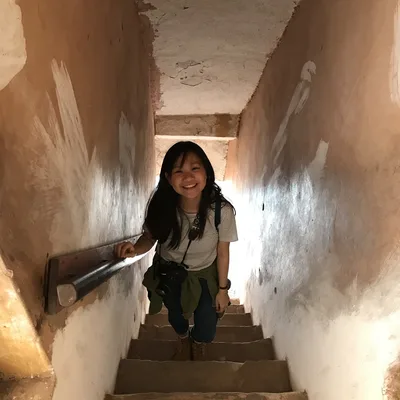
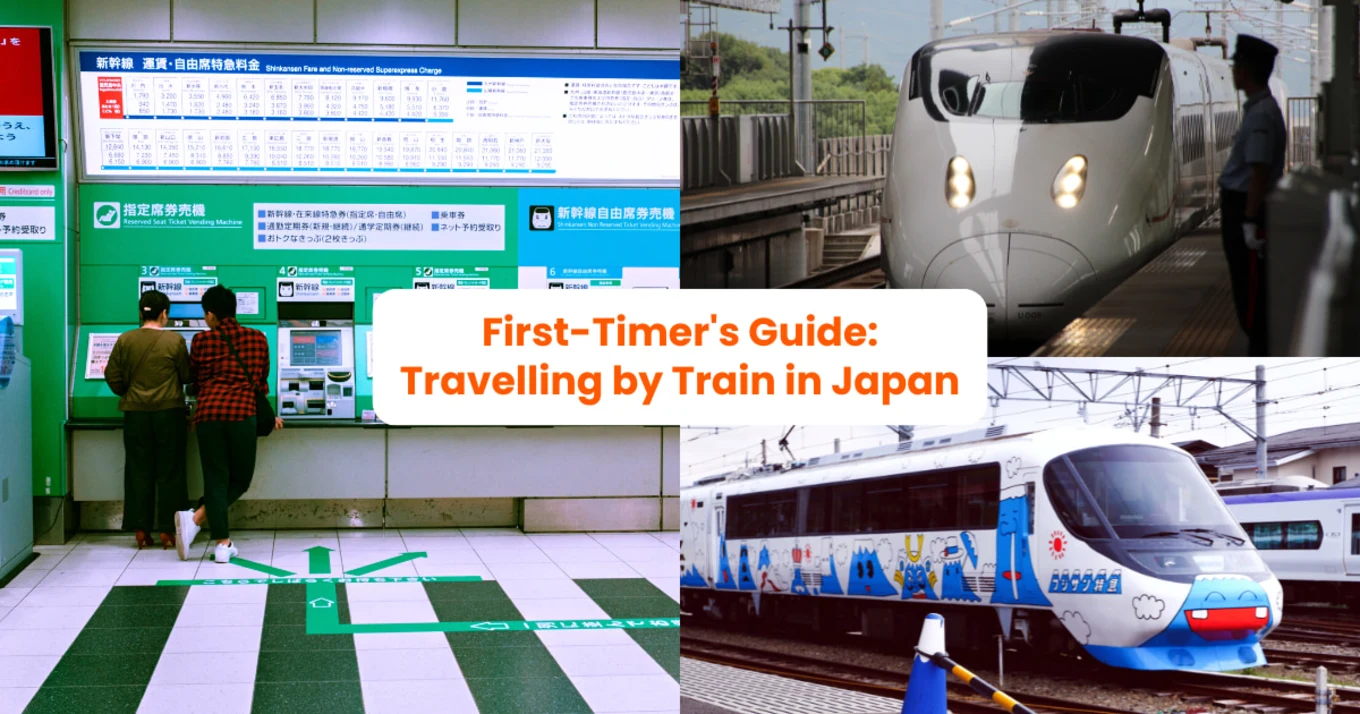




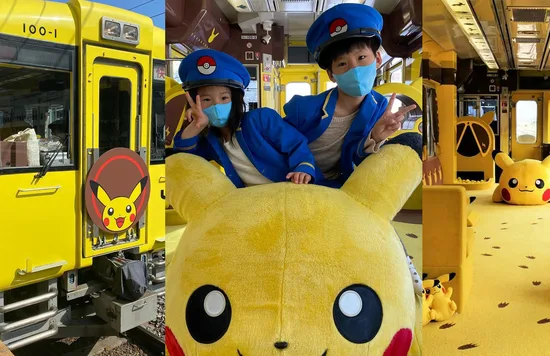



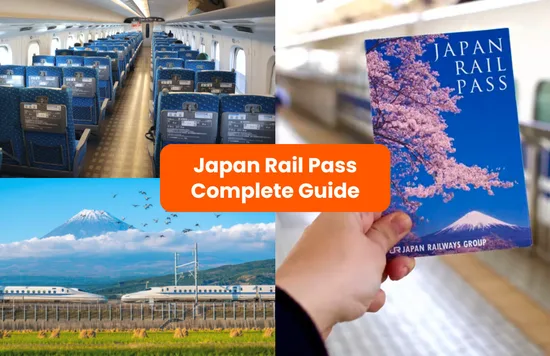




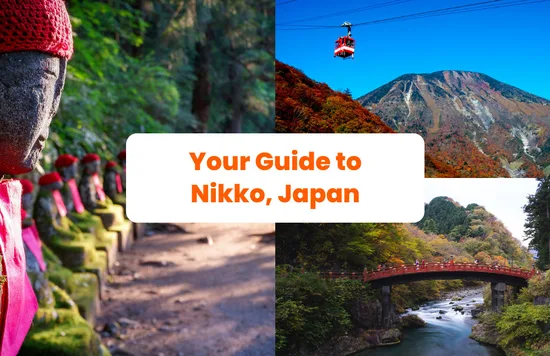
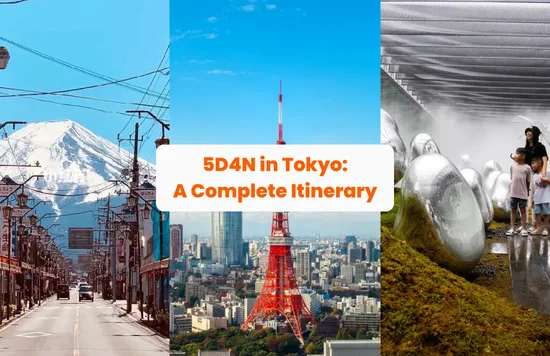

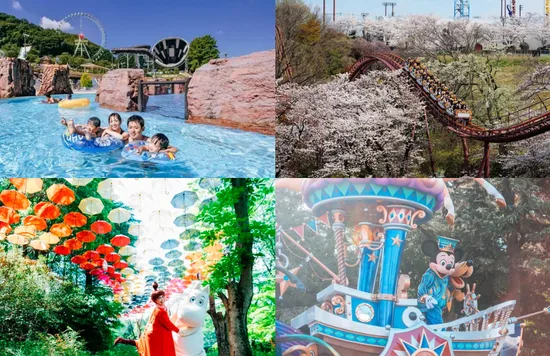




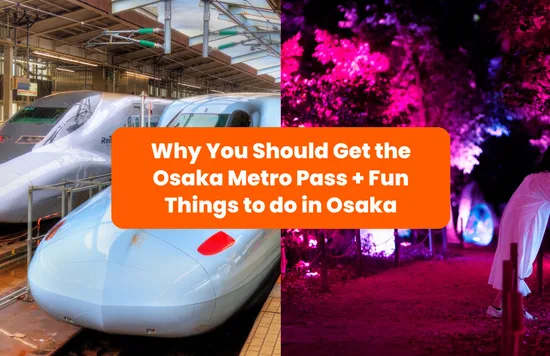
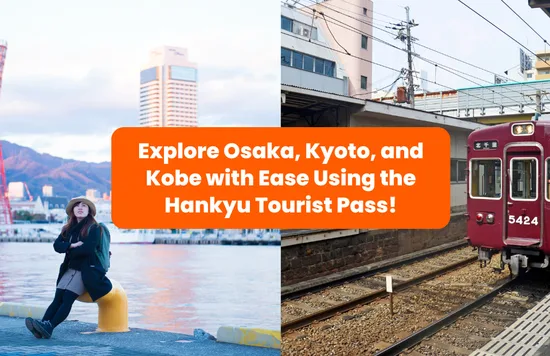
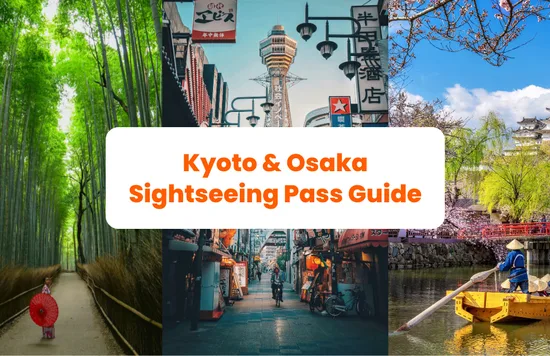


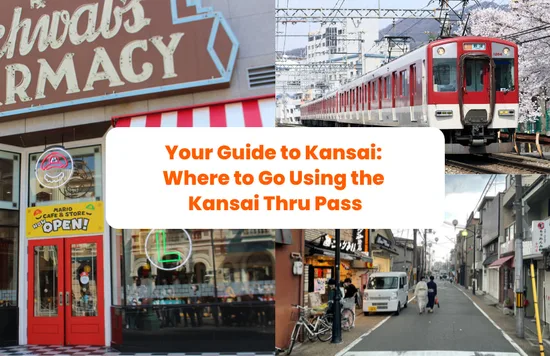
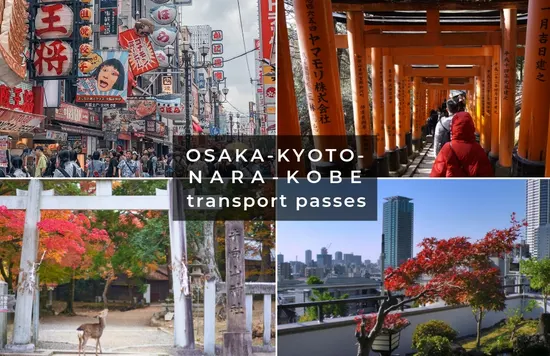
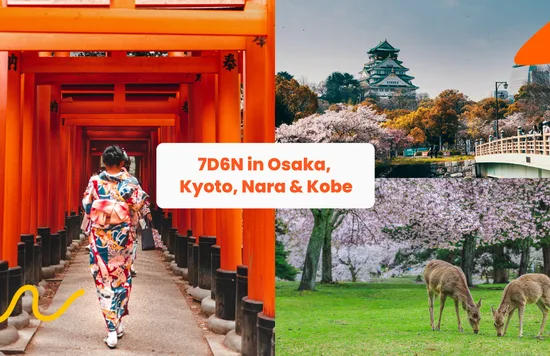

![[usxanz] JR Hokkaido Rail Pass](https://res.klook.com/image/upload/fl_lossy.progressive,q_85/c_fill,w_550,h_356/v1727345460/ovsaszuqdz6lsitdqhax.webp)

